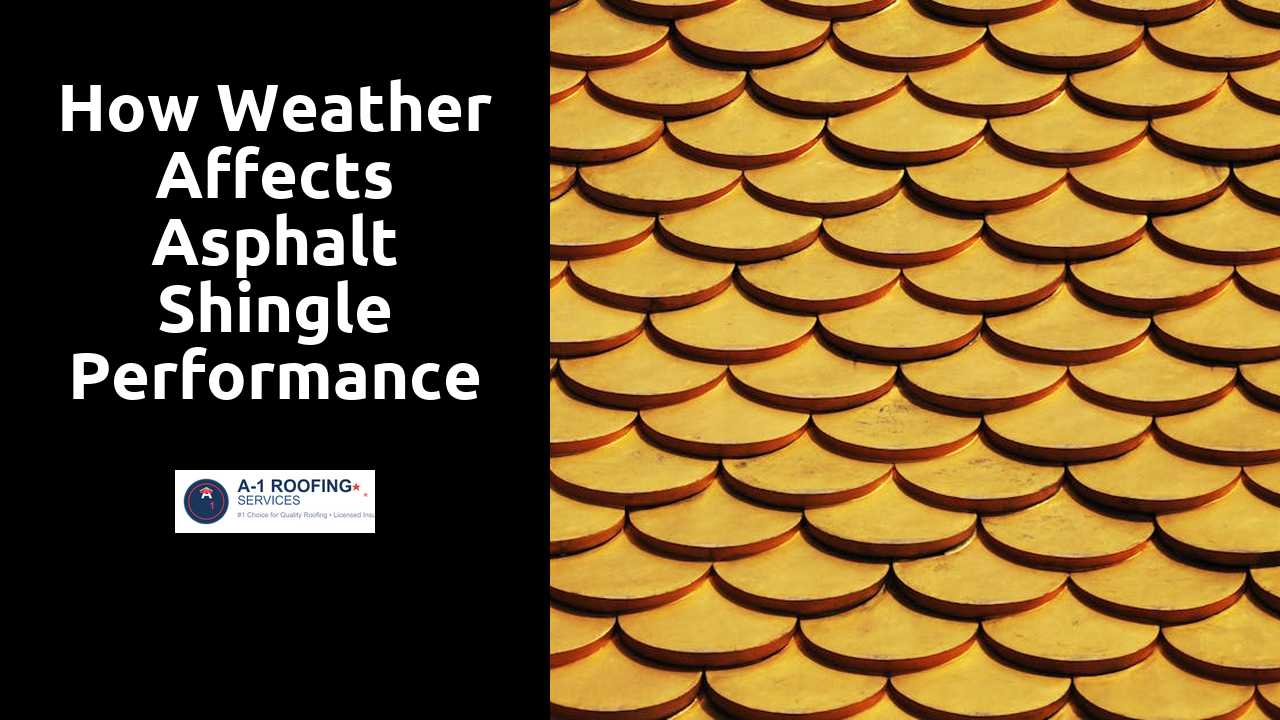
How Weather Affects Asphalt Shingle Performance
Table Of Contents
UV Radiation Exposure
Asphalt shingles are particularly vulnerable to the effects of UV radiation, which can significantly impact their longevity and performance. The exposure to direct sunlight leads to the breakdown of the shingle materials, causing them to lose their protective granules. This deterioration can increase the likelihood of leaks and other damage, compromising the overall integrity of the roof.
Extended UV exposure can also result in the fading of color, altering the aesthetic appeal of a home. Over time, this degradation can contribute to a decrease in energy efficiency as the shingles become less effective at reflecting heat. Homeowners need to be aware of these effects to make informed decisions regarding their roofing materials and maintenance practices.
Their blog is a great resource for information.
The Deteriorating Effects of Sunlight on Asphalt
Sunlight is one of the most significant factors affecting the longevity and performance of asphalt shingles. Prolonged exposure to ultraviolet (UV) radiation causes the materials to break down over time. The asphalt itself can become brittle, leading to cracking and curling. This deterioration not only compromises the shingles’ structural integrity but also negatively impacts their aesthetic appeal.
In addition to UV radiation, the heat generated by sunlight can further exacerbate wear and tear. As temperatures rise, the shingles may soften, allowing them to lose their shape and original characteristics. This thermal cycling can lead to a decrease in granule adhesion, which is crucial for protecting the underlying layers from the elements. Ultimately, these effects contribute to a reduced lifespan for asphalt shingles, making it essential for homeowners to monitor and maintain their roofs regularly.
Climate Variability
Climate variability plays a significant role in determining the lifespan and functionality of asphalt shingles. Different regions experience varying climate conditions, influencing how shingles respond to changes in temperature, humidity, and precipitation. For instance, areas with extreme temperature fluctuations may see shingles expand and contract more frequently, leading to stress that can weaken their integrity over time. Additionally, high humidity can promote mold and algae growth, further compromising their performance.
Shingle performance can also be significantly impacted by the amount and type of precipitation received. Regions prone to heavy rains will often experience issues such as water infiltration, while areas that face prolonged dry spells may deal with accelerated aging due to sun exposure. Both scenarios highlight the importance of understanding the local climate to select the most appropriate shingle materials and maintenance strategies. This awareness can help homeowners avoid common pitfalls linked to climate variability, ultimately extending the lifespan of their roofing systems.
Regional Differences in Shingle Performance
Regional variations in climate significantly influence the performance and longevity of asphalt shingles. For example, areas with high humidity and frequent rainfall tend to experience increased algae and mold growth, which can degrade the surface of shingles. Conversely, regions characterized by extreme heat may see accelerated degradation due to prolonged exposure to sunlight, leading to brittleness and cracking. These environmental factors necessitate different considerations for homeowners based on geographical location.
Moreover, the local climate can dictate installation practices and product selection. In colder regions, shingles must withstand freeze-thaw cycles that can cause materials to contract and expand, making durability a key factor. Warmer regions may prioritize reflective shingles that can help reduce cooling costs during hot summers. Understanding these regional distinctions allows homeowners to make informed decisions when choosing and maintaining asphalt shingles to optimize their roof's performance.
Maintenance Practices
Proper maintenance is essential for extending the lifespan of asphalt shingles. Regular inspections should be conducted to identify any damaged or missing shingles. Keeping the roof free from debris, such as leaves and branches, helps prevent moisture buildup. This practice reduces the risk of mold and algae growth, both of which can compromise shingle integrity.
Furthermore, periodic cleaning is important to preserve the performance of the roof. Maintenance involves removing dirt and staining from the shingles without causing damage. Homeowners should consider applying a protective coating that can help shield against UV rays. Ensuring that gutters and downspouts are clear and functional also plays a crucial role in directing water away, preventing unnecessary wear on the roofing material.
Keeping Shingles in Prime Condition
Regular maintenance is essential for preserving the lifespan of asphalt shingles. Homeowners should perform routine inspections at least twice a year, looking for signs of damage such as cracked or curled shingles. Debris accumulation in gutters can also lead to water pooling on the roof, which can adversely affect shingle integrity. Promptly addressing issues such as missing granules or water damage can prevent more extensive repairs and maintain the roof's protective qualities.
Applying protective coatings can enhance the durability of asphalt shingles significantly. These coatings act as a barrier against UV rays and moisture, which can contribute to deterioration over time. Additionally, ensuring proper ventilation in the attic helps regulate temperature and humidity, reducing the risk of shingle warping or buckling. Implementing these practices not only maximizes the performance of asphalt shingles but also contributes to the overall energy efficiency of the home.
Related Links
Common Problems Associated with Asphalt ShinglesInstallation Techniques for Asphalt Shingles